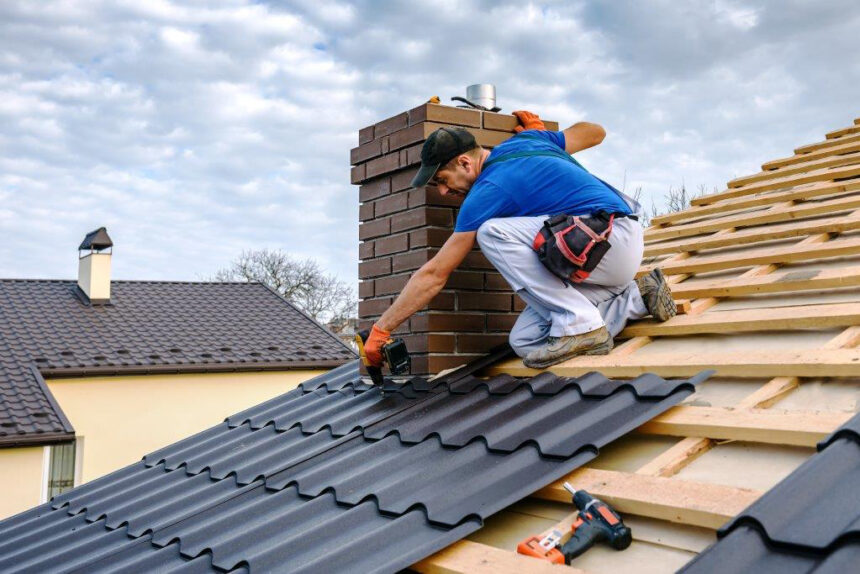When Was the Last Time You Looked Inside Your Loft?
Not to grab Christmas decorations. Not to shove old boxes aside.
A proper check — torch in hand, eyes on the rafters.
Most homeowners don’t think about their roof until water is dripping through the ceiling. By then, it’s often too late. The damage is done, and the cost has risen.
But what if spotting small problems early could prevent thousands of pounds in repairs from a roofing contractor and builder?
It can.
It starts with your loft.
What Happens When You Ignore the Loft?
Roofs fail quietly — a slipped tile, a cracked flashing.
Water seeps in slowly and silently.
Here’s what can go wrong without regular loft checks:
- Undetected leaks: A small leak might not show on the ceiling for months
- Hidden rot: Damp insulation and wood can decay without visible signs
- Pest infestations: Birds, squirrels, or wasps can nest and damage structures
- Mould growth: Poor ventilation or moisture build-up leads to harmful mould
Each of these starts small. Each can escalate into a major, expensive problem.
Why Start with the Loft?
Your loft is the first place many roofing problems reveal themselves.
It’s the frontline between your roof and your home.
What you might spot during a simple visual inspection:
- Water staining on rafters or insulation
- Sagging felt or underlay
- Light shining through missing tiles
- Rust on nails or damp patches around chimney breasts
- Insulation that’s flattened, mouldy, or wet
A 10-Minute Loft Check Can Save You Thousands
A new roof in the UK costs £5,000–£12,000.
A minor repair? Often under £300.
Real example:
Chris Baker from roofingwimbledon.co.uk shared how a customer ignored a damp smell.
Months later, their ceiling collapsed due to a hidden leak.
Repair cost: Over £7,000.
A simple loft check that winter could have caught the issue early.
How Often Should You Check Your Loft?
- Twice a year — Spring and Autumn
- After major storms or strong winds
- If you notice unexplained damp
- If you hear scratching or movement above
- Before buying or selling a house
Make loft checks part of your regular maintenance.
What to Look For — A Simple Checklist
1. Signs of water entry:
- Stains on wood, insulation or rafters
- Drips or water marks
- Rusty metal fasteners
2. Signs of poor ventilation:
- Condensation on felt or beams
- Mould or mildew
- Damp insulation
3. Structural concerns:
- Sagging or bowed timbers
- Rotting wood
- Loose nails
4. Pests or nests:
- Droppings or chewed material
- Movement sounds
- Feathers or wasp nests
5. Light leaks:
- Small holes showing daylight
What Causes Most Loft Problems?
Not always a failing roof — sometimes internal loft issues.
Common causes:
- Blocked soffit vents — restrict airflow, cause condensation
- Poorly laid insulation — traps moisture
- Overloaded storage — adds weight, disturbs air circulation
- Old water tanks — can leak or burst
Loft problems and roof problems are connected.
Real World Damage — What Can Happen if You Don’t Check?
Examples from UK homes:
- Leeds: Rotten roof timbers in a 1930s house — £9,400 repair
- Nottingham: Black mould due to poor ventilation — £3,000 treatment
- Sussex: Squirrel infestation — £2,700 rewire and insulation replacement
Annual checks could have prevented all of these.
How to Carry Out a Safe Loft Inspection
Safety tips:
- Use a secure ladder (with help if possible)
- Wear gloves, mask, and old clothes
- Use a bright torch (not your phone)
- Only walk on secure joists
- Stay near the hatch if unsure
If in doubt, hire a professional with proper equipment.
When to Call in a Pro
Some problems aren’t visible or obvious.
Call a professional roofer such as norwich-roofing.co.uk if:
Call a roofer if:
- You find water but not the source
- Mould appears on ceilings below
- You’re buying a house
- Your roof is over 20 years old
Many roofers offer free surveys.
Common Misconceptions That Stop People Checking
- “I’d notice if there was a problem.”
- “My roof was checked years ago.”
- “I don’t use the loft, so it’s fine.”
- “I’ll make it worse by poking around.”
Awareness doesn’t cause problems — ignoring them does.
Loft Checks for New Homeowners
Why it matters:
- Sellers may not know the roof history
- Surveys can miss hidden or seasonal issues
- Previous owners may patch over damage
Check in your first month for peace of mind.
Don’t Forget Rented Homes
Landlords are legally responsible for roof and loft condition.
If you rent:
- Ask when the last inspection was
- Report damp smells or black spots
- Take photos if you check the loft
Your safety matters.
The Bigger Picture — How Roof Health Affects Your Whole Home
A damaged roof can lead to:
- Higher energy bills
- Mould-related health risks
- Structural damage
- Lower property value
A sound roof = a sound home.
Final Thought: What’s Stopping You?
A loft check takes 10–15 minutes.
So ask:
- When did I last check?
- What could I be missing?
- Is a small hassle now worth avoiding a big repair later?
Your home is your biggest asset.
Protect it from the top down.


